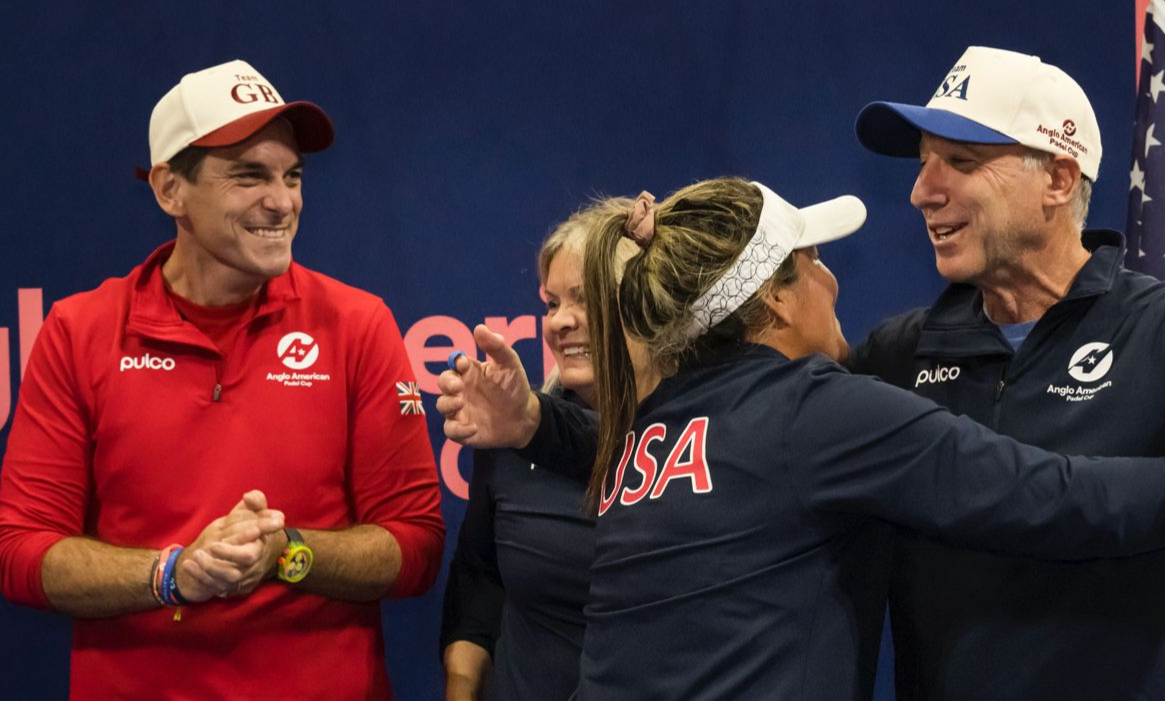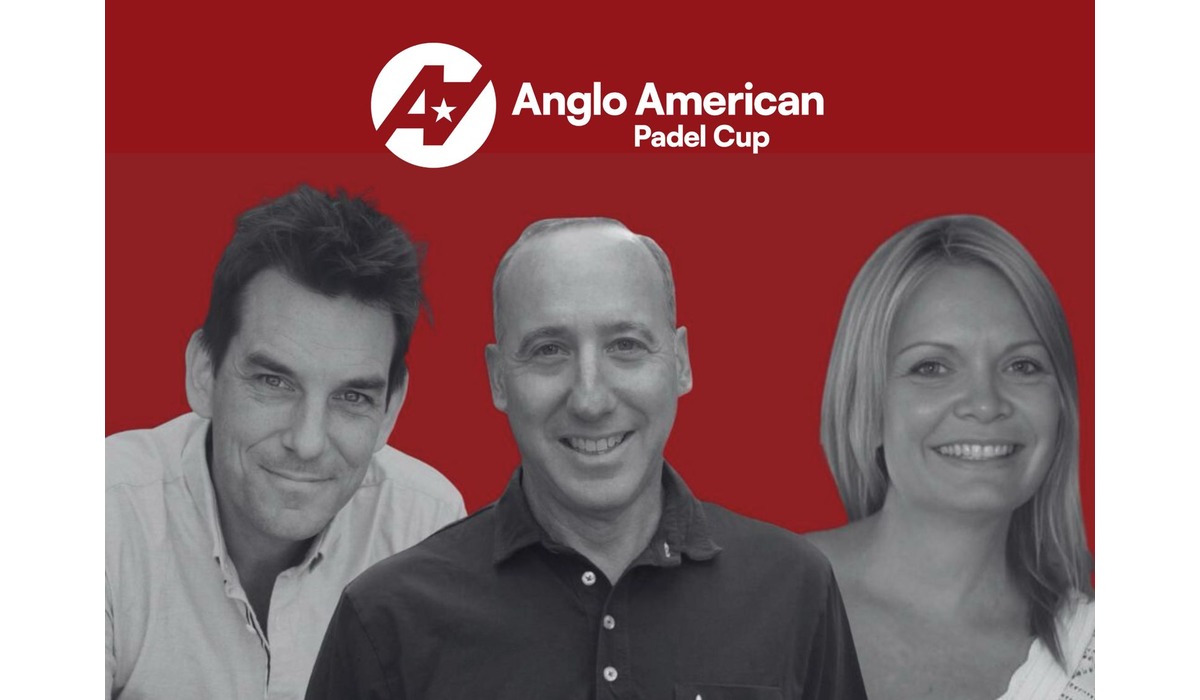With the inaugural Anglo American Padel Cup set to kick off later this week, the competition represents the chance for the US and UK’s padel talent to take to the court, continuing the long-standing sporting rivalry between the two nations. In a series of exclusive interviews, Cage 91 sat down with two players from the UK side – Eloise Tait and Cameron Dollimore – and two from the US team – Matt Hansen and Ana Zubori. These athletes, with varied sporting backgrounds, are all keen to represent their countries and are similarly eager to share their perspectives on the upcoming tournament. From the pride of playing for a national team, to influencing the growth of padel and defining success off the court, their viewpoints offer a unique insight into more than just competition and tactics – as Cage 91 discovers…
The New Arena of the UK-US Rivalry
With the historic sporting rivalry between the US and UK setting the backdrop for this inaugural edition of the Anglo American Padel Cup, a sense of national pride has certainly been emphasized by some of the players taking part. For Ana Zubori, a former collegiate tennis player representing the US team, facing the UK carries an “extra level of pride” that no other country can replicate. Although padel is an individual sport for player rankings, Zubori stresses that being part of the US team brings a unique sense of anticipation to competing. Yet, even if the two countries are well acquainted on a global sporting scale, this will be the first time that they’ll have met in the padel sphere. The Captain of the UK Women’s team, Eloise Tait, suggests that the status of both countries as “growing padel cultures” will provide an interesting point of comparison when the players take to the court – the absence of prior encounters will be a unique test, and one that she is relishing. As the competition draws closer and preparations intensify, one key point of interest is how the two nations will tune themselves up for the Cup. Matt Hansen, the US Men’s captain, explains how his pre-tournament training won’t be largely altered from normal, and that focusing on the controllables – his own game – will help him to stay deliberate, instead of thinking reactively. He stresses how refining the chemistry between himself and his playing partner will be key in ensuring that they are “in the best shape possible before the Cup.” This sense of meticulous self-preparation is shared by Dollimore – competing in tournaments in Spain during the run-up to the Cup has allowed him to maximise his time on the court, putting himself in the position to deliver a strong performance against the US.
“Even if the two countries are well acquainted on a global sporting scale, this will be the first time that they’ll have met in the padel sphere.”
Athletes as Architects: Growth, Culture, and Visibility
The Anglo American Cup will undoubtedly be a celebration of padel excellence from the UK and the US, but it also serves to act as a representation of the two nations’ development in padel culture. Padel’s explosion in the US has followed in the footsteps of pickleball, and the expanding network of infrastructure throughout the country has created an increasingly interconnected community. Facilities in America are “popping up like mushrooms” according to Zubori, with large-scale clubs – sometimes featuring over ten courts – becoming increasingly commonplace. The Cup’s hosting format will ensure that the US audience will be satiated next year, with the alternating locations meaning that its visibility will be extended to an audience outside the sport itself. The Cup’s potential to draw in a new crowd is corroborated by Tait, who conveys that holding a national-scale tournament will provide a different quality to the plethora of UK-based tournaments already taking place. The Cup’s trans-Atlantic quality will “present padel to those unfamiliar with the sport,” she explains, with the healthy competition between the two rivals creating a unique dynamic within the sport. With the tournament set to showcase the two countries’ best talent, as Dollimore adds, it will undoubtedly be a spectacle to remember for first-time viewers.
“The Cup’s hosting format will ensure that the US audience will be satiated next year, with the alternating locations meaning that its visibility will be extended to an audience outside the sport itself.”
Cage 91 Co. is powered by Taktika Equity
Aside from the on-court action, however, the players competing have expressed a sense of ownership in acting as ambassadors of an emerging sport. The Pan-American Games are just one example of an emerging international pathway in padel, and, with ecosystems still maturing, these athletes are at the forefront of an increasingly professional environment. With coverage ever-increasing and promotional events growing in scale, the Anglo American Cup is an opportunity to represent their countries as the faces of a growing sport.
Beyond the Scoreline: Parameters of Success
Even with both nations focused on the padel to come, the players on the US and UK teams have been vocal in expressing their thoughts on what will define ‘success’ for the tournament. For Ana Zubori, one of the Cup’s largest accomplishments will be the opportunity to benchmark both nations’ padel development. “It’ll be a fantastic opportunity to compare the growth year after year,” she explains, conveying how her position as a Team USA member allows me to see this first-hand. With the Cup featuring two of the world’s quickest-developing padel nations, it will provide a unique chance to understand how the sport has evolved on a professional scale in different markets. For Ellie Tait, however, the Cup’s ability to communicate with those currently outside of the padel community is one of its greatest upsides. For her, success will mean new eyes on the sport, with the hope that those familiar with the historic sporting rivalry will tune in to follow padel for the first time. This sense of a growing community is also emphasized by Hansen and Dollimore, but on a more connection-based level. They both explain how meeting new people – not just from competing teams – will allow the athletes to expand their network of friends and connections within the padel community, and that these connections will surely grow as the tournament becomes established in the global padel calendar.
“With the Cup featuring two of the world’s quickest-developing padel nations, it will provide a unique chance to understand how the sport has evolved on a professional scale in different markets.”
The first edition of the Anglo American Cup appears set to continue a long-established rivalry, giving these players the chance to add to an already colourful account of sporting competitions between the UK and the USA. These players are pioneers, laying the groundwork for future editions while ensuring that this first event is a sporting spectacle to remember. With the tournament acting as a marker of padel development between the two countries – both at grassroots and competitive levels – this early chapter in trans-Atlantic international competition is crucial in its visibility, cultural impact, and ability to communicate with padel’s growing community. The players are more than ready to serve up an exciting spectacle, and will set the tone for the Cup’s integration into the global padel calendar.


